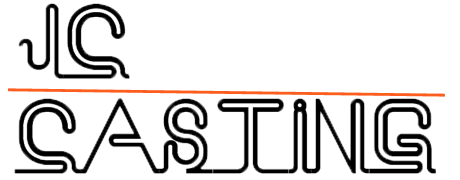1. What is Material Analysis in Investment Casting?
In the process of investment casting, the composition of material need to be changed when it is molten according to our clients’ requirements. Therefore, material composition is one of the most important properties of our products. It influences all the casting’s physical properties, ranging from the fluidity and castability of the metal when it is poured to the mechanical strength, toughness and corrosion resistance of the finished product. Meanwhile, many cast alloys have coarse segregated micro and macro structures which themselves pose challenges when it comes to accurately determining their composition. The selection of material not only affects the performance of casting products, but also affects the cost of investment casting. Right selection of material makes high quality products and saves you deals of money. That’s why the material analysis is a necessary and crucial inspection method for every foundry.
JC Casting uses SPECTRO, a worldwide top 3 German brand spectrometer to measure the chemical composition of investment casting products. Spectrometer is an inspection equipment for studying the spectrum of light and determining the composition of materials by means of that spectrum. Spectrometers are often the instrument of choice for foundry metal analysis as they require only minimal intervention from foundry operators when used for inspection, quality control, and alloy identification. Stationary and portable versions exist, both with a high level of accuracy. Routine calibration and maintenance is required, and third party certification of results are often needed for spectrometer results to retain their validity. Spectrometers allow for metal analysis throughout the metal life cycle from metal production to processing, as well as at the end of its service life at recycling plants. Spectrometers work as following. Spectroscope can measure reflected light on the surface of steels. The spectrum can test what elements are contained in an article, by grasping optical information with spectrometers, developing it on photographic plates, displaying and analyzing it with computerized automatic display numerical instruments. Spectrogram is material’s fingerprint.
2. How does JC Casting Assure Material & Chemical Precision?
JC Casting uses AQL inspection standards to test each batch of raw materials which are purchased from stable and qualified suppliers. Moreover we assess the performance of our material suppliers monthly according to IATF 16949 quality management system.
The chemical composition of material in each furnace are tested at least twice. When the raw material is molten, which is the calculation basics for adding elements, the inspector tests the chemical composition of raw material for the first time. Then the operator adds metal elements to make sure the molten material in furnace is correct. In order to ensure precision and accuracy, the inspector tests the material for the second time, before pouring molten material into the ceramic shells.
The spectrometer’s calibration during fixed periods is critical for the final inspection results. That’s why we calibrate the spectrometer and maintain it daily, weekly and monthly. Furthermore, all ofJC Casting’s inspection equipment and tools are calibrated yearly by qualified third party. The inspection equipment’ calibration standards is based on IATF 16949 quality management system.
3. What are Advantages & Disadvantages of Using Spectrometers in Material Analysis?
Advantages:
Fast quantitative determination of elements (typically less than one minute).
Low capital investment and operating costs.
Easy sample preparation.
Quick analysis of carbon, nitrogen, oxygen, phosphorus, and sulfur in steel.
Calculates carbon content (%) of stainless steels or low alloy steels.
Distinguishes between 304/316 and 304L/316L stainless steels.
Provides input data to carbon equivalency calculation.
Disadvantages:
Not completely “non-destructive” (slight surface damage can be expected).
Cannot test small parts (less than the size of a dime).
Difficult to test in tightly confined spaces.
Requires constant calibration and maintenance.
Routine third party certification of results may be required.
